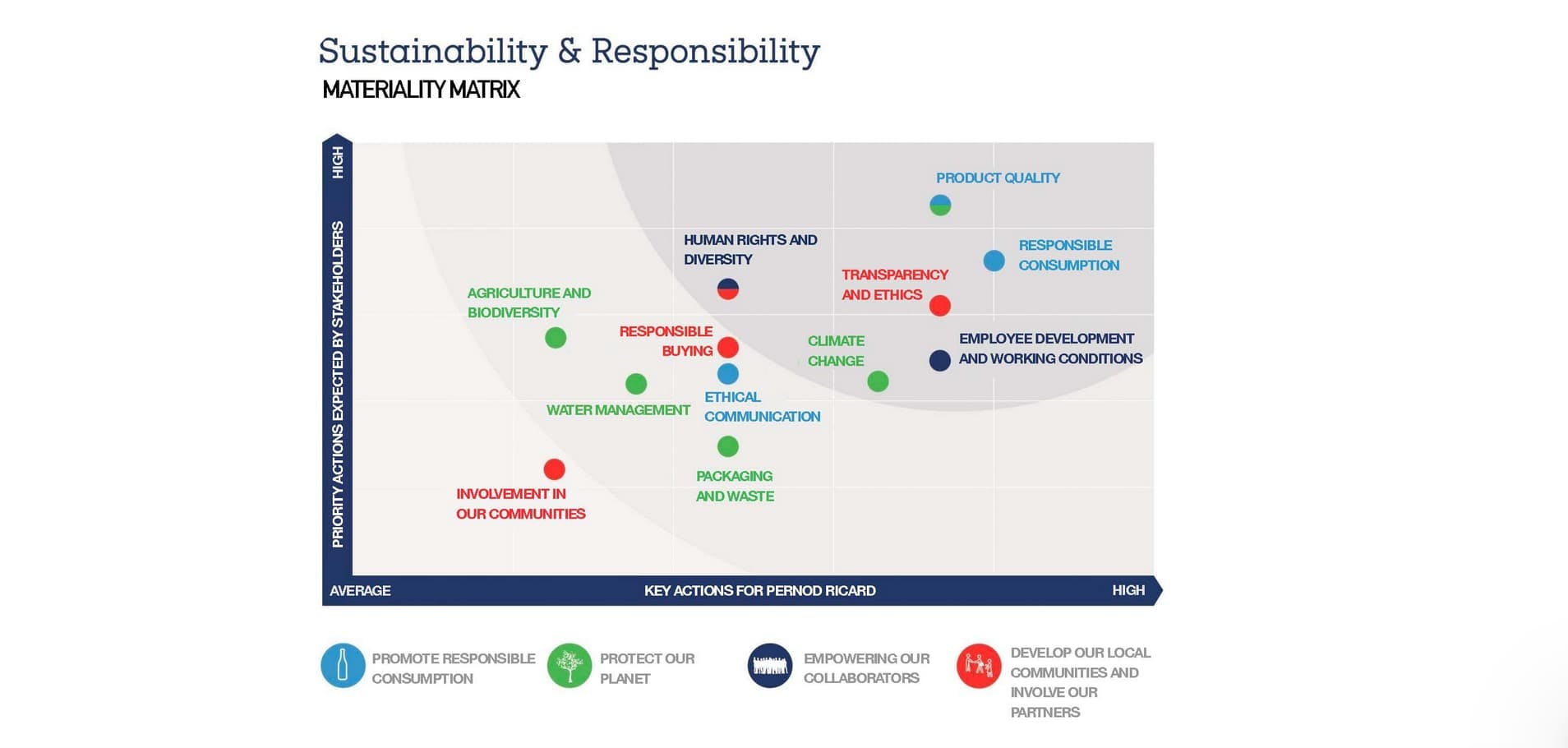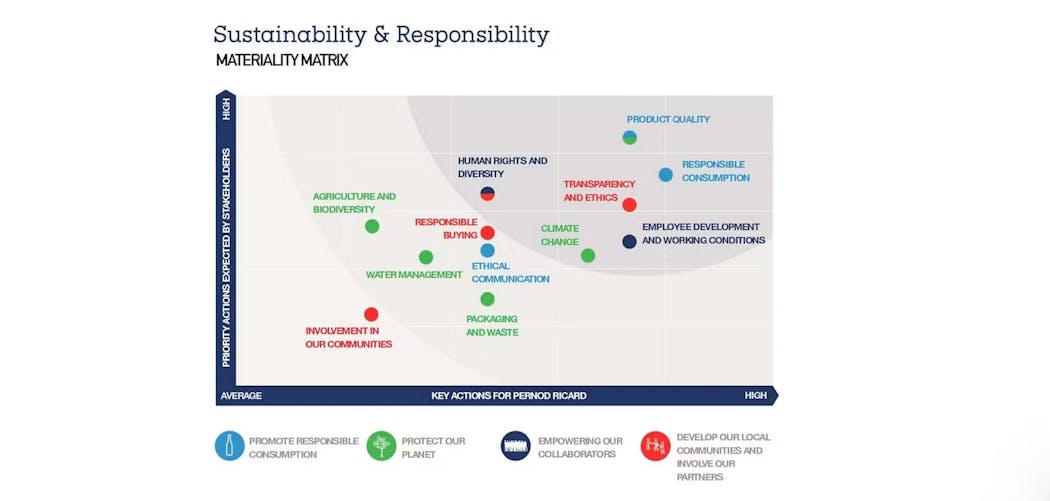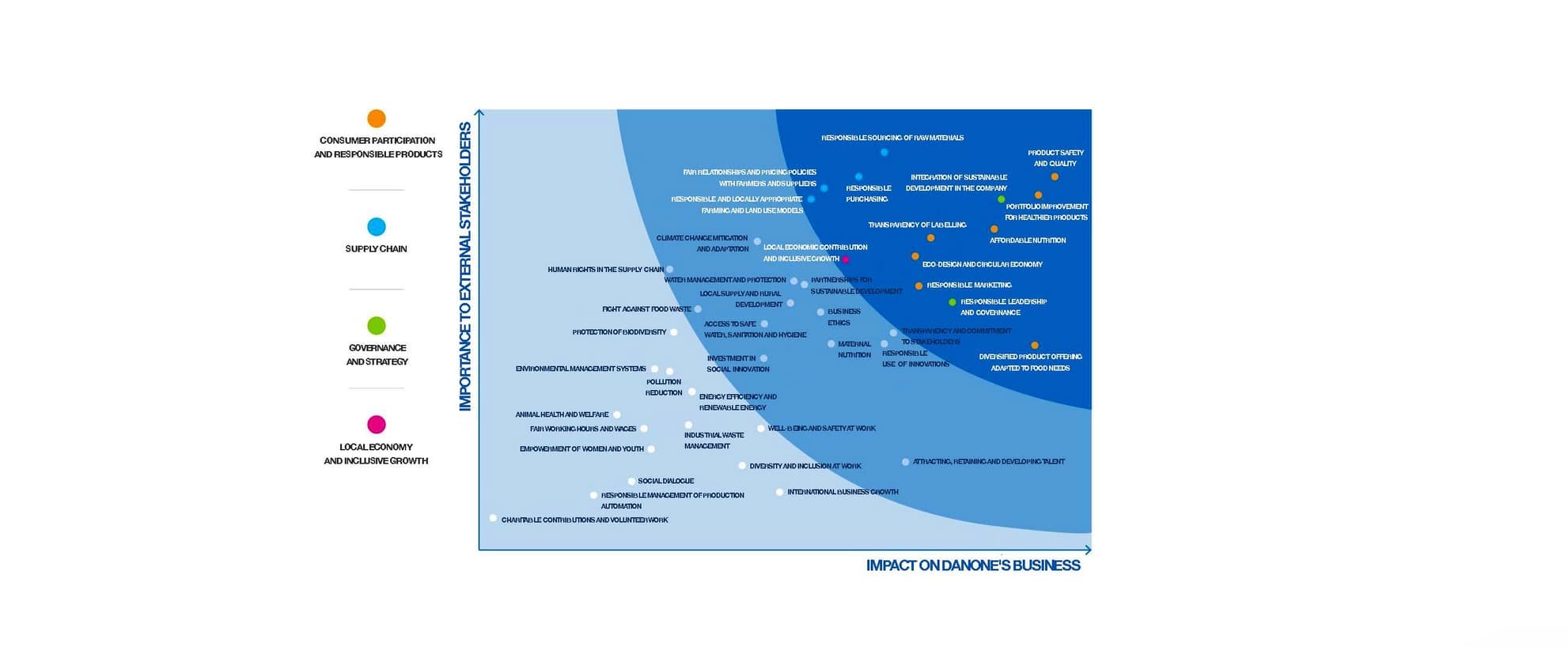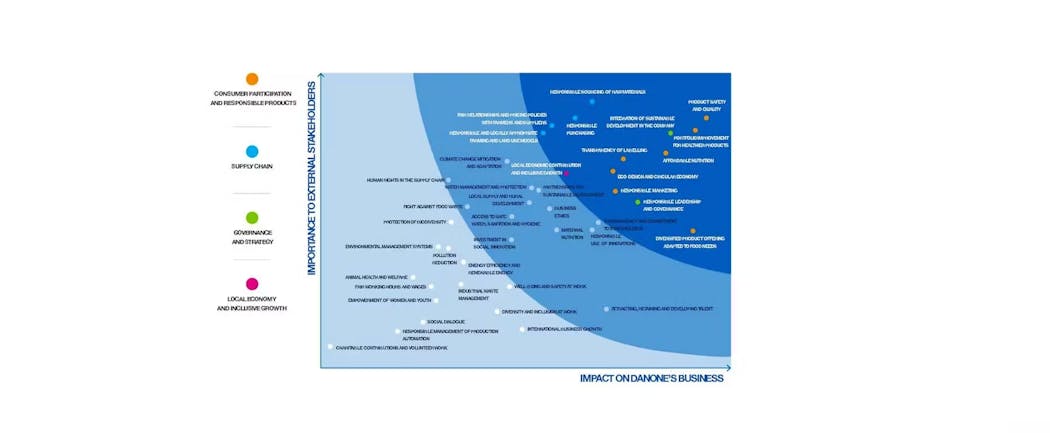
California Climate Accountability Package: SB253, SB261, & SB252
What is the California Climate Accountability Package, and how do SB 253 and SB 261 (SB 219), and SB 252 help the state work towards their environmental goals?
ESG / CSR
Industries



Establishing socially responsible practices like a CSR approach is crucial to any business model seeking to improve its social or environmental commitments.
A CSR approach is an excellent step for any company or nonprofit organizations seeking to implement sustainable practices, improve their economic responsibility, or increase their pillar of corporate social or environmental performance.
Responsibility is the pillar to any sustainable plan in development, and ergo – CSR itself.
Committing to csr initiatives is an indispensable asset for companies seeking to attract today's consumers, and is guaranteed to yield greater business success. There are specialist organizations that can help you to achieve this!
In this article, we'll provide insight on CSR, explained with examples, how CSR impacts society and the environment, different types of corporate social responsibility, and how CSR is generally understood amongst business operations and interactions.
CSR, otherwise known as corporate social responsibility, is a type of corporate sustainability practice that seeks to improve social and environmental performance, establish ethical labor practices, and corporate responsibility, while also pertaining to their economic responsibility.
According to Boston Consulting Group, companies which aim to have corporate social responsibility rooted into their business models will bring competitive advantages such as reduced employee turnover, a greater willingness to engage in CSR, improved brand image, more interest from local charities concerned with economic, social, and environmental factors, better investor relations, and increased societal expectations for diligence in terms of CST
More specific sustainability initiatives that CSR companies may take include using sustainable resources, sponsoring local events, providing financial benefits or financial assistance, offering educational materials or free educational services to developing countries or local communities, philanthropic programs, or any CSR activities that enhance productivity.
Committing to a Corporate Social Responsibility (CSR) approach is always worth your while – read more to find out why corporate social responsibility initiatives are imperative to the success of your business model.


If you're looking for a breakdown of corporate social responsibility (CSR) explained, here it is:
Corporate Social Responsibility (CSR) is defined by the European Commission as, “a concept whereby companies integrate social and environmental concerns in their business operations and in their interaction with their stakeholders on a voluntary basis.”
Therefore, a company that practices corporate social responsibility (CSR) aims to have a positive impact on society through sustainable practices while simultaneously remaining economically viable to their business model.
CSR is represented by three letters, which each demonstrate a pillar of corporate social responsibility.
A CSR approach is the implementation of a company strategy which strives to achieve various corporate social responsibility initiatives such as economic responsibility, environmental sustainability, and social responsibility.
To establish a hierarchy for these issues, a materiality matrix can be used to identify the CSR initiatives or CSR strategies that are most likely to improve the company's performance and sustainability.


The importance of governance is often forgotten by company managers because it is not directly linked to one of the three pillars a part of CSR.
Nonetheless, it covers several essential issues – such as the involvement of the company’s stakeholders in CSR, whether this includes shareholders, NGOs, trade unions or local authorities, the implementation of anti-corruption measures in the countries where the company is based, or the decision not to opt for an aggressive tax optimization policy such as Uber in France.
It is therefore an important point to consider in any company's journey to establish CSR practices.
In order to guide the CSR approach of companies, certain strategic issues have been collectively defined and grouped under the acronym ESG (for Environmental, Social and Governance). Recognised by the international financial community, these ESG criteria are used to assess the level of integration of sustainable development into a company's strategy and to take into account challenges over the long term.
Each company is free to focus on the most appropriate csr strategies in order to develop tailor-made CSR programs that are relevant to their sector, according to the context and individual sensibilities.
However, take note: corporate social responsibility only yields success if it is implemented as part of a holistic approach like any other philanthropic responsibility.
To support this approach of making corporate social responsibility initiatives a central focus for companies, the French Parliament passed the PACTE law (Action Plan for Business Growth and Transformation) in 2019.
It represents a fundamental building block in terms of corporate social responsibility (CSR): it introduces the notion of “mission-oriented companies”.
Through the use of this new terminology, a company can add a “purpose” or “mission” to its singular role of generating profit for its shareholders, with the aim of initiating its corporate social responsibility practices on a larger scale.
This is the case for Patagonia, Slip Français and also Danone, an example to be further discussed at the end of this article.
Finally, it is clear that in France, corporate social responsibility is becoming synonymous with sustainability, as the increasingly widespread implementation of CSR approaches and laws propel the country towards corporate citizenship.
But to what end? Is corporate social responsibility enough to save the world from climate change?
Okay, so adopting a corporate social responsibility approach is good for the planet, but will it be beneficial for all business models seeking improved financial outcomes?
The answer is an overwhelming, absolute yes.
In February 2020, Oney and OpinionWay published a study on the aspirations and behavior of consumers in France, Spain, Portugal and Hungary.
The results are conclusive: 9 out of 10 respondents expect brands to be socially-engaged and to help them consume better. The study reported that:
In this regard, three aspects of consumption are highlighted as being the main levers for action:
These figures show that a common trend is emerging among European consumers: they are increasingly positioning themselves as “consum’actors” who want to create a positive impact on the environment and global change.
This trend has been heightened by the international health crisis that has impacted local communities around the world, which began in February 2020.
Furthermore, in this period characterized by a lack of trust: with the latest greenwashing scandals – green packaging is now viewed as potentially dubious rather than reassuring. This is a clear example that establishing environmental responsibility through a CSR, or corporate social responsibility approach – is the best way to reassure consumers about what they are buying.
While consumers represent one side of a coin, employees represent the flip side – those implementing the business strategies from inside the company.
If a place such as Harvard Business School establishes a good CSR program, the employees are more likely to devote their energy to the CSR efforts necessary because the objectives underpinning their work have meaning.
Focusing on corporate social responsibility can help to boost this commitment.
Based on a Kantar survey of 1,500 employees, the 2020 edition of the CSR perception barometer published by MEDEF highlights the importance of employee commitment to their professional work.
And guess what?
A commitment to CSR can significantly boost employee retention by improving the company’s image. According to a survey on behalf of Zipdo, 83% of employees working in companies with a poor CSR department would consider quitting. In addition to this, 83% of employees working in companies with a CSR department or function feel that their organization can take pride in having a “positive impact” on society, compared to 59% of employees in organizations without a CSR strategy.
The last side of our coin (yes it's a three-sided coin with a triple bottom line) is represented by new recruits, and especially young talent.
Young people are particularly concerned about companies’ environmental commitments and finding meaning in their work.
According to a study by Jam, 15-25 year olds are looking for a company that is committed to them as well as the planet.
Seven out of ten young people think that companies are not sincerely committed to corporate social responsibility.
Taking into account that salaries are generally the same between competitors for employees with equivalent skills and qualifications, the real difference are the values and fair trade practices that your company embodies.
Whether your company is a start-up or a large corporation, no matter how big or small, an honest and transparent CSR approach is worth more than any offer of employment.


After considering these arguments, it is clear that implementing a CSR approach for your company as soon as possible is the best way to reduce environmental impact and create the most ultimately effective business models.
But how do you go about establishing CSR programs?
In general terms, the key stakeholders of a CSR approach include all the entities that interact with the company and which are likely to be affected by its activities:
Internally within the company, while the implementation of corporate CSR actions affects everyone, insofar as each individual is free to approach their HR department or line manager with ideas, in theory, it is the CSR manager (or director of sustainable development and social responsibility) who is responsible for defining and coordinating the CSR programs to be implemented for sustainable development.
Their duties include identifying the priority issues to be addressed, steering the CSR approach in collaboration with the organizations various departments (HR, production, safety, etc.), defining success indicators and control processes, developing communication and lobbying actions, producing reports on the actions taken, and finally – monitoring the new policies that must be adopted.
Once all the key stakeholders are prepared and motivated to embark on the company’s transition to corporate responsibility, it is important to understand the company’s current position in order to implement appropriate actions.
A CSR audit involves the establishment of an exhaustive status report on all levels: an environmental and social analysis.
This includes supplier evaluation, waste and construction site reports, etc. An assessment of GHG emissions is also a good starting point, as it is used to instantly identify the company's major emission sources, and, therefore, the areas in which action must be taken for the company to reduce environmental impact and overall greenhouse gas emissions.
Everything is recorded in a table of criteria that must be approved, often with an initial self-assessment followed by a visit from an external consultant.
Many companies are now choosing to create and establish CSR programs, which is excellent news for those seeking corporate social responsibility.
However, many companies that choose to commit to CSR programs often forget or neglect to communicate enough about their commitments, even though they aren't obligated to – it is an important step to achieve corporate social responsibility.
Below are some measures for effective CSR communication:
Alongside CSR communication, internal training is essential.
According to a study carried out by the Observatoire Salarié et Entreprise Responsable in January 2020, 39% of employees lacked knowledge of the subject in-house, thus hindering the adoption of CSR practices.
What’s more, almost half of employees struggled to give a precise definition of CSR! Many employees are simply left out of initiatives: only 8% of employees are asked to integrate CSR into their business activity.
However, the most important statistic from the study is as follows: 70% of employees would like to be more involved!
There is no reason not to go for it: you must train your employees if you want your CSR approach to be sustainable in the long term and they are more than willing to participate.
You don't necessarily need to go back to school to learn about CSR, but below are two examples of certified CSR training:


Companies can get support for their CSR approach from a number of organizations, including: specialized consulting firms, employers' organizations, professional federations, the Chamber of Commerce and Industry, ADEME, or networks of specialized companies.
Implementing a coherent CSR program requires time and money, and it is difficult to estimate the overall cost of the approach because of the cross-disciplinary nature of CSR.
For example, it is logical that reducing energy and resource consumption will reduce the company’s costs while benefiting the environment.
Thus, the company will also improve their financial performance.
Nevertheless, certain costs can be quantified: the creation of a CSR manager role, a Carbon Assessment, the development of a communication campaign and a graphic charter, etc. These expenses will likely include calling in a CSR consultancy firm.
When implementing a CSR strategy, it is an excellent idea to enlist the help of specialist consultancy firms, such as:
These firms aim to offer comprehensive and tailored support to each customer to establish CSR activities.
To quote Greenflex,
Such firms therefore serve as a mentor in CSR: they provide advice, identify issues and highlight where efforts still need to be made. Some of these firms, such as Carbone 4, are experts in Carbon Assessment, the foundation of an effective CSR strategy.
There are many independent experts available that can support you with a practical implementation of a corporate social responsibility approach.
For example, the IMPACTS agency offers advice and training on this subject.
Companies conduct a carbon assessment, among the other CSR actions that must be implemented, in order to evaluate the quantity and source of all their GHG emissions.
Many organizations offer carbon assessment services, with the two main solutions being either to hire a specialized firm or to opt for company carbon assessment software, like that of Greenly.
Enlisting the help of a specialist company means being provided with comprehensive support throughout the CSR process, but it is a costly investment in terms of time and money (depending on the firm, rates can vary by several tens of thousands of dollars).
This is precisely why software has begun to emerge, which is revolutionizing the carbon assessment market.
The goal is to make the process easier, faster and cheaper. It is up to you to decide which option is best suited to your organization, but a corporation putting in the effort to achieve corporate responsibility is likely to improve their overall supply chain and operational cost savings.
Conducting a carbon assessment is compulsory to align the company with ESG criteria, and has been mandatory in France since the adoption of the Ecological Transition for Green Growth Act in 2015.
Many businesses are affected by this first step towards the development of a low-carbon strategy, in particular companies with more than 500 employees (250 in France’s overseas departments and territories).


From small companies to major corporations, everyone must commit to building a more sustainable world – and businesses can do so by establishing corporate social responsibility.
Below are two examples of large groups that have opted to implement a CSR strategy and three startups representative of the cause to save the planet.
Danone, the French food giant with a turnover of $21 billion, is an example of a large group that has been committed to its CSR approach for many years. Antoine Riboud, the founder, emerged as the first promoter of sustainable development in 1972: “We should lead our businesses with our hearts as much as our heads, and we must not forget that if the earth’s natural resources are limited, those of mankind are infinite if he feels motivated.”
Internally, the company has based its human rights policy on the GRI 3.0 (Global Reporting Initiative). As a result, Danone can demonstrate how it applies these indicators using concrete examples and measures (via its Food, Nutrition and Health Charter in 2009). The decision to use the GRI framework is evidence of the strength of Danone's CSR initiative, since these indicators demonstrate a voluntary application of standards rather than strict compliance with the law.
Externally, extra-financial rating agencies audit the group’s CSR performance; for example, the Vigeo agency used the ISO 26000 standard to evaluate Danone and found that its results were very good, close to the maximum score. Thus, Danone not only seems to be complying with the law as far as sustainable development is concerned, but also to be taking the initiative with regard to the recommended, but not mandatory – standards.


However, everything is set to change at Danone. On March 14th, 2021 – the board of directors ousted CEO Emmanuel Faber. During his tenure, Faber made some major decisions in terms of CSR, which resulted in decreased profits, and this did not fair well with the shareholders – who have made their desire make profit the number one priority once again known. A decision of corporate governance that should be followed very closely and one that might not work out for the best.
Another example of a large French group being committed to sustainable development is Bouygues. To quote Philippe Bonnave, CEO of Bouygues Construction: “We want to create a low-carbon culture”. With the support of consulting firm Carbone 4, the group's five core businesses announced new climate strategies in December 2020, in line with the Paris Agreement. The company launched a new low-carbon strategy in 2020 (2030 target), which will involve the CEOs of each of the group's business lines.
Among these core businesses, Colas and Bouygues Construction have announced a 30% reduction (40% for Bouygues Construction) for Scope 1 and 2 (direct and indirect emissions linked to energy consumption) and 30% for Scope 3a (other indirect upstream emissions, such as the materials used by suppliers). Bouygues Immobilier, the third largest subsidiary in the construction sector, announced a 32% reduction for each Scope category.


However, it is worth noting that large corporations like Danone and Bouygues are still have a long way to go until their csr activities yield drastic social or environmental benefits.
In 2016, WWF published a list of the 25 most polluting French companies... and both groups were on it.


Launched in 2017, this neobank for freelancers has made social responsibility one of its primary objectives. To establish a “responsible bank”, it has implemented measures for employees, the environment and their freelance customers.
According to CEO Nicolas Reboud, the CSR policy at Shine has several aims: firstly, “to try and create the most progressive and healthy working conditions possible”; secondly, “to have the lowest possible environmental impact”; and thirdly, to have “the most positive social impact possible”. These are our famous three pillars. These objectives have been transformed into a number of practical measures.
For example, internally, Shine has amended all of its employee contracts to remove the exclusivity clause and to include one day per month for freelance work: guaranteeing freedom and healthy working conditions to improve employee retention is an example of a CSR approach that works.
The latest initiative by recycling powerhouse TerraCycle, Loop was launched in Paris and New York in May 2020, and in London in October. Milka biscuits in aluminium tins, Signal chewable toothpaste, Coca-Cola in glass bottles and refillable Bic and Febreze pens. In total, the products of over one hundred brands are sold in returnable packaging through Loop. “We chose home delivery to make the experience as smooth and easy-to-adopt as possible. From five loops, i.e. reuse cycles, our products have less impact than the same ones sold in their conventional e-commerce versions,” explains Laure Cucuron, CEO of TerraCycle Europe.
Loop is now under the umbrella of Carrefour, with stands available in most of its supermarkets and through its online store by choosing the Loop option. By applying this concept, jobs can be created and society can move towards zero waste.
The mission of TooGoodToGo is well-established as part of the CSR landscape: to fight against food waste by recovering unsold food from local shops, which is then sold at a lower price on their app.
This directly involves all the central issues of CSR:
If reading this article about CSR has made you interested in reducing your carbon emission to further fight against climate change – Greenly can help you!
Greenly can help you make an environmental change for the better, starting with a carbon footprint assessment to know how much carbon emissions your company produces.
Click here to learn more about Greenly and how we can help you reduce your carbon footprint.